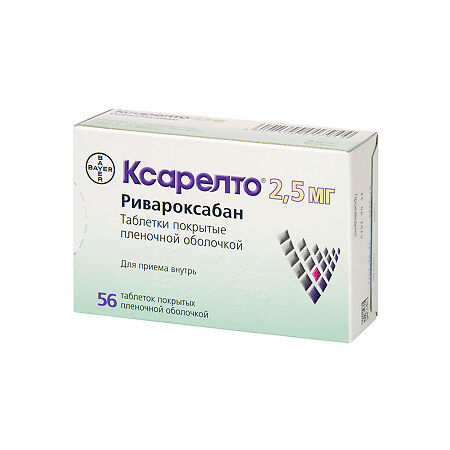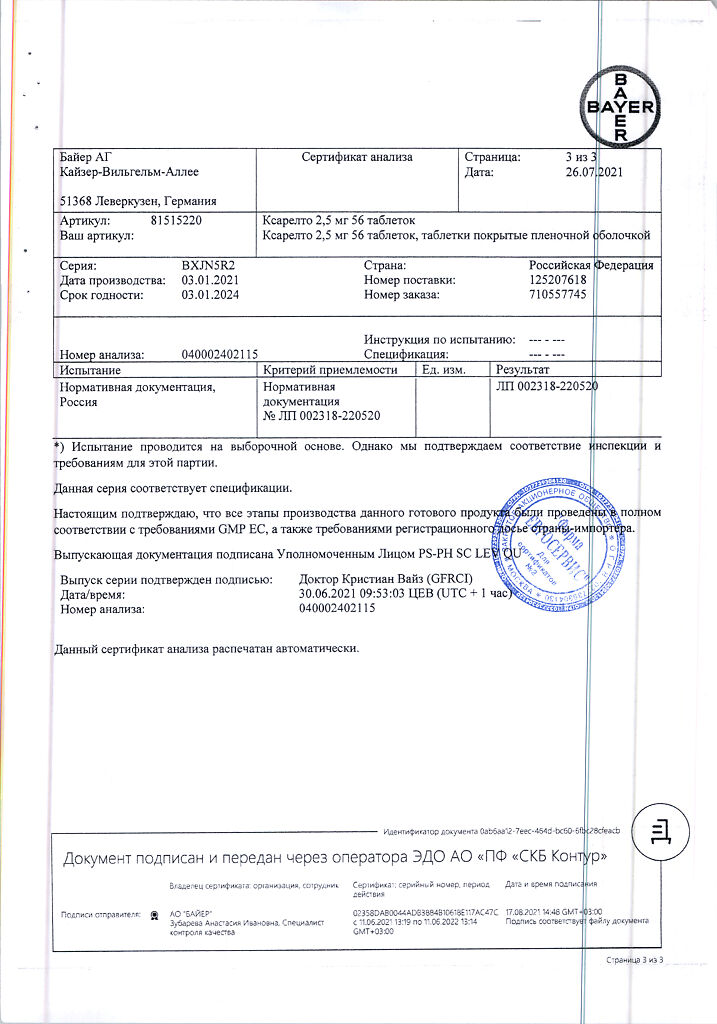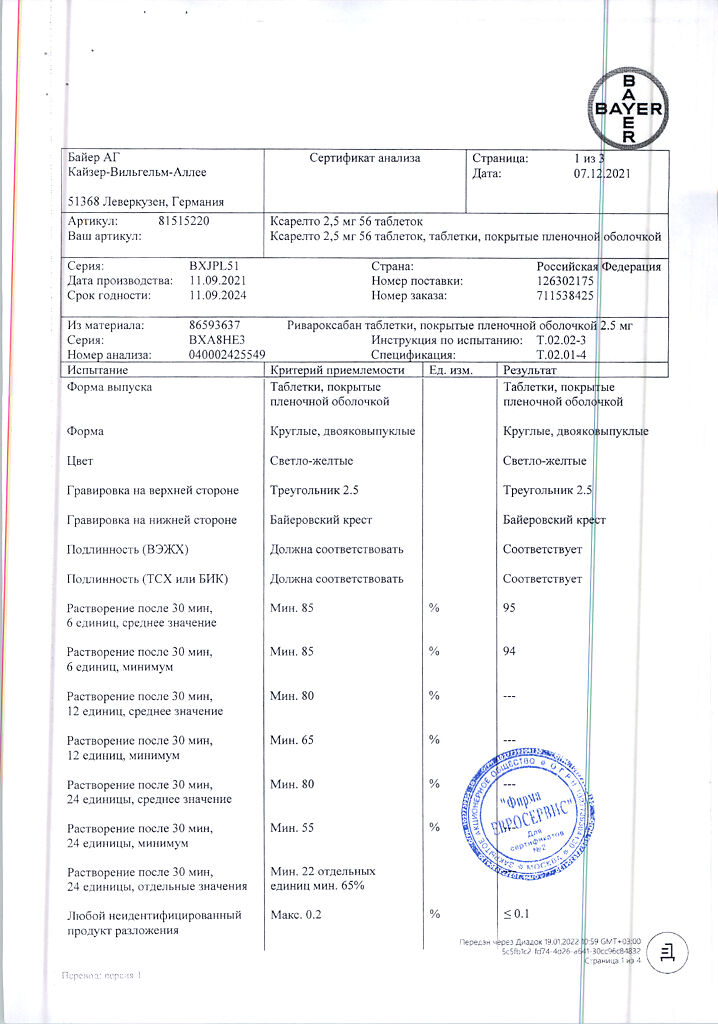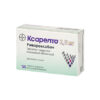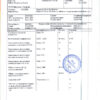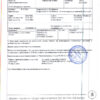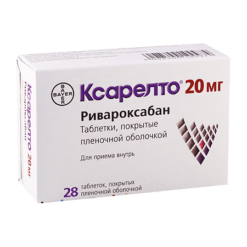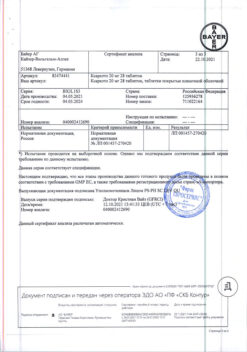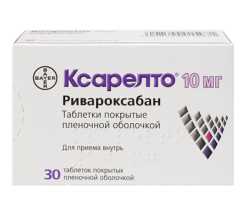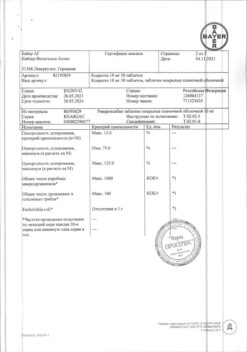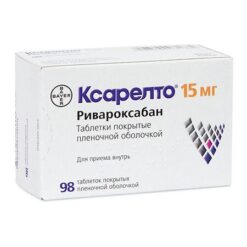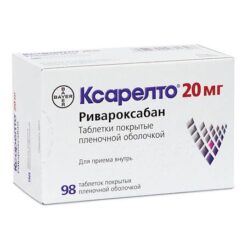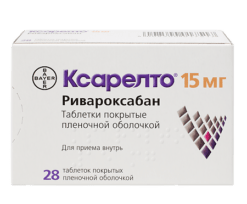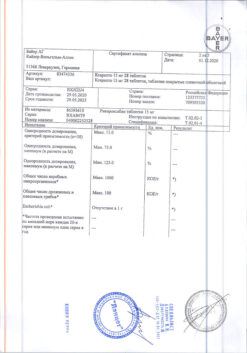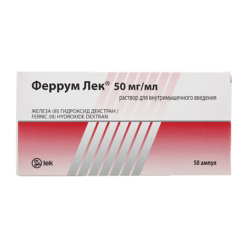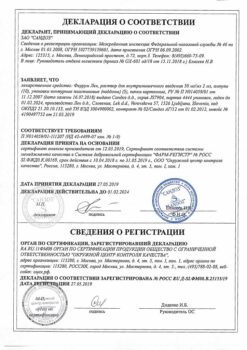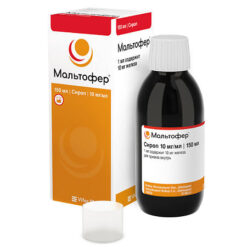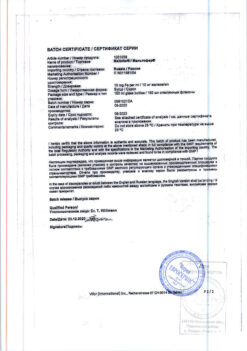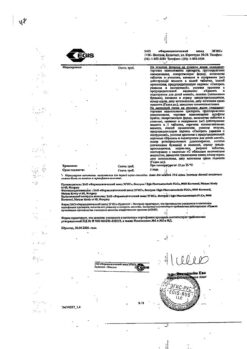No products in the cart.
Xarelto, 2.5mg 56 pcs.
€98.73 €82.28
Description
Stroke sequelae, Thrombophlebitis, Stenocardia, Thrombosis prevention, Prevention of heart attacks and strokes
Prevention of death due to cardiovascular causes, myocardial infarction and stent thrombosis in patients after acute coronary syndrome (ACS), proceeding with elevated cardiac-specific biomarkers, in combination therapy with acetylsalicylic acid or with acetylsalicylic acid and thienopyridines -clopidogrel or ticlopidine.
Indications
Indications
Prevention of death due to cardiovascular causes, myocardial infarction and stent thrombosis in patients after acute coronary syndrome (ACS), which occurred with an increase in cardiac-specific biomarkers, in combination therapy with acetylsalicylic acid or with acetylsalicylic acid and thienopyridines – clopidogrel or ticlopidine.
Pharmacological effect
Pharmacological effect
Pharmacotherapeutic group:
Special instructions
Special instructions
Use of concomitant medications
Rivaroxaban is not recommended for use in patients receiving concomitant systemic treatment with azole antifungals (eg, ketoconazole) or HIV protease inhibitors (eg, ritonavir). These drugs are potent inhibitors of CYP3A4 and P-glycoprotein. Therefore, these drugs may increase plasma concentrations of rivaroxaban to clinically significant levels (2.6-fold on average), which may lead to an increased risk of bleeding (see Interactions with Other Drugs section). However, the azole antifungal drug fluconazole, a moderate inhibitor of CYP3A4, has a less pronounced effect on the exposure of rivaroxaban and can be used concomitantly with it (see section “Interactions with other medicinal products”).
Renal dysfunction
Rivaroxaban should be used with caution in patients with moderate renal impairment (CrCl 30-49 ml/min) receiving concomitant medications that may lead to increased plasma concentrations of rivaroxaban (see section “Interactions with other drugs”).
In patients with severe renal impairment (CrCl < 30 ml/min), plasma concentrations of rivaroxaban may be significantly increased (1.6-fold on average), which may lead to an increased risk of bleeding. Therefore, due to the presence of this underlying disease, such patients have an increased risk of developing both bleeding and thrombosis. Due to the limited amount of clinical data, rivaroxaban should be used with caution in patients with CrCl 15-29 ml/min.
There are no clinical data on the use of rivaroxaban in patients with severe renal impairment (CrCl < 15 ml/min). Therefore, rivaroxaban is not recommended for use in such patients (see sections "Method of administration and dosage", "Pharmacological properties").
Patients with severe renal impairment (CrCl 15-29 mL/min) or increased risk of bleeding, as well as patients receiving concomitant systemic treatment with azole antifungals or HIV protease inhibitors, should be closely monitored for signs of bleeding after initiation of treatment. Monitoring can be carried out by conducting regular physical examinations of patients, carefully monitoring the state of postoperative wound drainage, and also by periodically determining hemoglobin.
Patients with a history of stroke and/or TIA
Xarelto® 2.5 mg twice daily is contraindicated in patients with ACS who have a history of stroke or TIA. Only a few patients with ACS with a history of stroke or TIA have been studied, but the limited data obtained demonstrate a lack of clinical benefit from treatment with rivaroxaban in these patients.
Patients with hemorrhagic or lacunar stroke
Patients with CAD or PAD with a history of hemorrhagic or lacunar stroke were not studied. Such patients are contraindicated in treatment with Xarelto® 2.5 mg twice daily in combination with acetylsalicylic acid.
Patients with ischemic nonlacunar stroke
Patients with CAD or PAD who had an ischemic nonlacunar stroke within the previous month were not studied. Such patients are contraindicated in treatment with Xarelto® 2.5 mg twice daily in combination with acetylsalicylic acid during the first month after stroke.
Risk of bleeding
Xarelto®, like other antithrombotic agents, should be used with caution in patients with an increased risk of bleeding, such as:
congenital or acquired coagulation disorders
uncontrolled severe hypertension
active gastrointestinal pathology with ulceration
recent acute ulcer in the gastrointestinal tract
vascular retinopathy
recent intracranial or intracerebral hemorrhage
intraspinal or intracerebral vascular abnormalities
recent brain, spinal cord, or eye surgery
history of bronchiectasis or episode of pulmonary hemorrhage
Caution should be exercised if the patient is concomitantly receiving medications that affect hemostasis, such as nonsteroidal anti-inflammatory drugs (NSAIDs), platelet aggregation inhibitors, other antithrombotic drugs or selective serotonin reuptake inhibitors (SSRIs) and selective serotonin norepinephrine reuptake inhibitors (SNRIs) (see section “Interactions with other drugs”).
Active ingredient
Active ingredient
Rivaroxaban
Composition
Composition
1 film-coated tablet contains:
Pregnancy
Pregnancy
Pregnancy
Contraindications
Contraindications
Hypersensitivity to rivaroxaban or any excipient included in the drug.
Clinically significant active bleeding (eg, intracranial hemorrhage, gastrointestinal bleeding).
Liver diseases occurring with coagulopathy leading to a clinically significant risk of bleeding, including cirrhosis and impaired liver function of class B and C according to the Child-Pugh classification (see section “Pharmacological properties”).
Pregnancy and breastfeeding (see section “Use during pregnancy and breastfeeding”).
Children and adolescents up to 18 years of age (efficacy and safety for patients in this age group have not been established).
Severe renal impairment (CrCl < 15 ml/min) (there are no clinical data on the use of rivaroxaban in this category of patients).
Treatment of ACS with antiplatelet agents in patients who have suffered a stroke or transient ischemic attack.
Concomitant therapy with any other anticoagulants, for example, unfractionated heparin, low molecular weight heparins (enoxaparin, dalteparin, etc.), heparin derivatives (fondaparinux, etc.), oral anticoagulants (warfarin, apixaban, dabigatran, etc.), except in cases of switching from or to rivaroxaban (see section “Method of administration and dose") or when using unfractionated heparin in doses necessary to ensure the functioning of a central venous or arterial catheter.
Hereditary lactose or galactose intolerance (for example, congenital lactase deficiency or glucose-galactose malabsorption), since this medicinal product contains lactose.
With caution
The drug should be used with caution:
In the treatment of patients with an increased risk of bleeding (including congenital or acquired tendency to bleeding, uncontrolled severe arterial hypertension, gastric and duodenal ulcers in the acute stage, recent acute gastric and duodenal ulcers, vascular retinopathy, recent intracranial or intracerebral hemorrhage, in the presence of known anomalies of the spinal or cerebral vessels brain, after recent surgery on the brain, spinal cord or eyes, with a history of bronchiectasis or pulmonary hemorrhage).
In the treatment of patients with moderate renal impairment (CrCl 3049 ml/min) who are simultaneously receiving drugs that increase the concentration of rivaroxaban in the blood plasma (see section “Interaction with other drugs”).
When treating patients with severe renal impairment (ClCr 15 -29 ml/min) (see section “Special Instructions”).
In patients receiving concomitant medications that affect hemostasis, such as nonsteroidal anti-inflammatory drugs (NSAIDs), antiplatelet agents, other antithrombotics or selective serotonin reuptake inhibitors (SSRIs) and selective serotonin norepinephrine reuptake inhibitors (SNRIs).
Rivaroxaban is not recommended for use in patients receiving systemic treatment with azole antifungals (for example, ketoconazole, itraconazole, voriconazole and posaconazole) or HIV protease inhibitors (for example, ritonavir). (See sections “Interaction with other drugs”, “Special instructions”).
Patients with severe renal impairment (CrCl 15-29 ml/min) or an increased risk of bleeding and patients receiving concomitant systemic treatment with azole antifungals or HIV protease inhibitors should be closely monitored after initiation of treatment for timely detection of bleeding complications.
Side Effects
Side Effects
The safety of Xarelto® was assessed in thirteen phase III studies involving 53,103 patients treated with Xarelto®.
Table 1: Number of patients enrolled in the study who took at least 1 dose of rivaroxaban, total daily dose and maximum duration of treatment in phase III clinical studies using Xarelto®
Therapeutic area
Number of patients*
Total daily dose
Maximum duration of treatment
Prevention of venous thromboembolism (VTE) in patients undergoing elective hip or knee replacement surgery.
6,097
10 mg
39 days
Prevention of venous thromboembolism in patients hospitalized for medical reasons.
3,997
10 mg
39 days
Treatment of DVT, PE and prevention of recurrence of DVT, PE.
6,790
Day 1 – 21: 30 mg
From day 22: 20 mg
After at least 6 months of therapy: 10 mg or 20 mg
21 months
Prevention of stroke and systemic thromboembolism in patients with non-valvular atrial fibrillation.
7 750
20 mg
41 months
Prevention of atherothrombotic events in patients after ACS.
10 225
5 mg or 10 mg respectively, in combination with acetylsalicylic acid or acetylsalicylic acid with clopidogrel or ticlopidine
31 months
Prevention of stroke, myocardial infarction and death due to cardiovascular causes, as well as for the prevention of acute limb ischemia and all-cause mortality in patients with coronary artery disease or PAD.
18,244
5 mg in combination with acetylsalicylic acid 100 mg or 10 mg in monotherapy
47 months
*Patients who have received at least one dose of rivaroxaban.
Table 2: Incidence of bleeding and anemia in patients treated with Xarelto® from phase III studies
Therapeutic area
Any bleeding
Anemia
Prevention of VTE in patients undergoing elective hip or knee replacement surgery.
6.8% of patients
5.9% of patients
Prevention of venous thromboembolism in patients hospitalized for medical reasons.
12.6% of patients
2.1% of patients
Treatment of DVT, PE and prevention of recurrence of DVT, PE.
23% of patients
1.6% of patients
Prevention of stroke and systemic thromboembolism in patients with non-valvular atrial fibrillation.
28 events per 100 patient-years
2.5 events per 100 patient-years
Prevention of atherothrombotic events in patients after ACS.
22 events per 100 patient-years
1.4 events per 100 patient-years
Prevention of stroke, myocardial infarction and death due to cardiovascular causes, as well as for the prevention of acute limb ischemia and all-cause mortality in patients with coronary artery disease or PAD.
6.7 events per 100 patient-years
0.15 events per 100 patient-years*
* A prespecified sampling approach was used to collect data on adverse events
Considering the mechanism of action, the use of Xarelto® may be associated with an increased risk of latent or obvious bleeding from any tissues and organs, which can lead to the development of posthemorrhagic anemia. The risk of bleeding may increase in patients with severe uncontrolled arterial hypertension and/or when used together with drugs that affect hemostasis (see section “Precautions”).
Signs, symptoms and severity (including possible death) will vary depending on the source and extent or severity of bleeding and/or anemia (see Overdose section).
Hemorrhagic complications may include weakness, pallor, dizziness, headache, or unexplained swelling, shortness of breath, or shock that cannot be explained by other causes. In some cases, as a consequence of anemia, symptoms of myocardial ischemia, such as chest pain or angina, are observed.
Known complications secondary to severe bleeding, such as increased subfascial pressure syndrome (compartment syndrome) and renal failure due to hypoperfusion, have also been reported with the use of Xarelto®. Therefore, when assessing the condition of any patient receiving anticoagulants, the possibility of bleeding should be considered.
The incidence of ADRs (adverse drug reactions) when using Xarelto® is shown in the table below. Within each frequency group, adverse events are presented in order of decreasing severity.
Frequency of occurrence is defined as:
very often (>1/10),
often (>1/100 to <1/10),
uncommon (>1/1,000 to <1/100),
rare (>1/10,000 to <1/1,000).
Table 3: All treatment-emergent adverse drug reactions reported in patients in phase III clinical trials (cumulative data from RECORD 1-4, ROCKET AF, J-ROCKET, MAGELLAN, ATLAS, EINSTEIN (DVT/PE/Extension/CHOICE) and COMPASS*)
System-organ class (MedDRA – Medical Dictionary of Regulatory Lexicon version 20.0)
Often
Uncommon
Rarely
Blood and lymphatic system disorders
Anemia (including relevant laboratory values)
Thrombocytosis (including increased platelet count)A
Immune system disorders
Allergic reaction, allergic dermatitis
Nervous system disorders
Dizziness, headache
Intracerebral and intracranial hemorrhages, syncope
Visual disorders
Hemorrhage into the eye (including hemorrhage into the conjunctiva)
Heart disorders
Tachycardia
Vascular disorders
Decreased blood pressure, hematoma
Disorders of the chest and mediastinum
Nasal respiratory system, bleeding, hemoptysis
Gastrointestinal disorders
Bleeding gums, gastrointestinal bleeding (including rectal bleeding), gastrointestinal and abdominal pain, dyspepsia, nausea, constipationA, diarrhea, vomitingA
Dry mouth
Disorders of the liver and biliary tract
Liver dysfunction
Jaundice
Skin and subcutaneous tissue disorders
Pruritus (including rare cases of generalized pruritus), skin rash, ecchymosis, cutaneous and subcutaneous hemorrhages
Hives
Musculoskeletal and connective tissue disorders
Pain in limbsA
Hemarthrosis
Bleeding into a muscle
Renal and urinary tract disorders
Bleeding from the urogenital tract (including hematuria and menorrhagiaB), impaired renal function (including increased blood creatinine concentrations, increased blood urea concentrations)A
General and administration site disorders
FeverA, peripheral edema, decreased overall muscle strength and tone (including weakness and asthenia)
Deterioration in general health (including malaise)
Local edema
Laboratory and instrumental data
Increased activity of liver transaminases
Increased bilirubin concentration, increased alkaline phosphatase A activity, increased LDGA activity, increased lipase A activity, increased amylase A activity, increased GGTA activity
Increased concentration of conjugated bilirubin (with or without a corresponding increase in ALT activity)
Injuries, intoxications and complications of manipulations
Bleeding after medical manipulation (including postoperative anemia and bleeding from a wound), bruise
Secretion from a woundA
Vascular pseudoaneurysmC
And they were observed mainly after major orthopedic operations on the lower extremities
B observed in the treatment of VTE as very common in women aged < 55 years
C were observed as infrequent as part of the prevention of complications in ACS (after percutaneous interventions).
*A prespecified selective approach was used to collect data on adverse events. Because the incidence of adverse drug reactions did not increase, and because no new adverse drug reactions were identified, data from the COMPASS study were not included to calculate the incidence in this table.
The most common adverse reactions in patients using the drug were bleeding. The most common bleeding events (>4%) were epistaxis (5.9%) and gastrointestinal bleeding (4.2%).
During post-marketing monitoring, cases of the following adverse reactions were reported, the development of which had a temporary connection with taking Xarelto®. It is not possible to assess the frequency of occurrence of such adverse reactions within the framework of post-registration monitoring.
Immune system disorders: angioedema, allergic edema. In phase III registration clinical trials (RCTs), such adverse reactions were considered uncommon (from >1/1000 to <1/100).
Disorders of the liver and biliary tract: cholestasis, hepatitis (including hepatocellular damage). In the phase III RCT, such adverse reactions were considered rare (>1/10,000 to <1/1,000).
Blood and lymphatic system disorders: thrombocytopenia. In the phase III RCT, such adverse reactions were considered infrequent (>1/1000 to <1/100).
Interaction
Interaction
Pharmacokinetic interactions
Overdose
Overdose
Rare cases of overdose up to 600 mg without bleeding or other adverse events have been reported. Due to limited absorption, a concentration plateau is expected without a further increase in the mean plasma concentration of rivaroxaban when supratherapeutic doses of 50 mg or higher are used.
Storage conditions
Storage conditions
At a temperature not higher than 30°C.
Shelf life
Shelf life
3 years.
Do not use after the expiration date stated on the package
Manufacturer
Manufacturer
Bayer AG, Germany
Additional information
| Shelf life | 3 years. Do not use after the expiration date on the package |
|---|---|
| Conditions of storage | At a temperature not exceeding 30 ° C. |
| Manufacturer | Bayer AG, Germany |
| Medication form | pills |
| Brand | Bayer AG |
Other forms…
Related products
Buy Xarelto, 2.5mg 56 pcs. with delivery to USA, UK, Europe and over 120 other countries.

